THE MINUTEMAN Volume 19, Nov 2024
Field and Combat shirts, Minimalist field stove setup, Cold Weather hanging, and more...
Field Shirts vs Combat Shirts
Military tops have come a long way in the last decade or two from what many of us remember finding in either surplus stores or guys that were issued it. It’s use is three-fold. One being a system to protect the wearer from the environment, two being to help camouflage the wearer from the enemy and three, to help with identification. In this brief article we’re going to discuss the protection from the environment and my opinion as to what is best and when.
Let’s start with your traditional BDU/Fatigue top or Field Shirt.
The Field Shirt is basically your traditional BDU top. Available in all cotton, poly/cotton blends, or ripstop versions in all cotton or poly/cotton blends. Traditionally the field shirt has 2 chest pockets and 2 lower pockets and as time went on more and more guys were modifying these tops by removing the lower waist pockets and placing them on the sleeves of the shirts to make them more usable in the field. The lower pockets became useless when wearing an LBE, any sort of belt kit, or even a hip belt on a backpack.
Some of the pros of the Field Shirt are that:
Pocket utilization for EDC and/or survival items to be kept on your person
Can double as a wind protection layer
Easy to layer under with warming layers such as long underwear and light fleeces as well as wearing quick dry wicking shirts underneath in warmer weather
The body is durable when wearing kit over it
Can be modified by removing/rearranging pockets
And for some cons:
Depending on the material can take awhile to dry in the field when wet
Are hard to layer overtop with insulated jackets unless the puffy jacket is oversized
Now for the newer Combat Shirts… This is a sort of hybrid top that combines the sleeves of a Field Shirt with the body of a sport top. These gained popularity with Special Operations guys especially when wearing body armor and battle belts. Wearing armor is hot and in warm climates you are going to sweat a lot and run the risk of chafing. So for the high speed, low drag guys on fast/dynamic missions these tops became more and more popular. The body is made of 100% polyester which wicks away perspiration and drys quickly helping keep the wearer dry and comfortable. The sleeves being cotton or a poly/cotton blend were durable and allowed for pockets on the arms for storing small items that may be needed.
Pros of the Combat Shirts:
Lighter weight and more packable
Quick drying
Wicking body
Easy to wear chest kit and body armor over
Combat Shirt Cons:
The fabric on the body is prone to pilling and snagging
No protection from the elements
My take on the two different tops is that Combat shirts are great for wearing with armor, when doing range work, and for in hot/arid climates. The Field Shirt is ideal for woodland patrolling, year round use, general wear, and for when camo is a necessity.
From my own use over the last several years, I have found myself wearing a Field Shirt more and more especially as I have been focusing more on fieldcraft and patrolling work. I prefer the 50/50 or 65/35 blends for the combination of durability and protection.
Minimalist Field Stove Setup
Folks have mixed opinions on field stoves for the Modern Minuteman. Some feel that a stove isn’t needed at all while others couldn’t imagine going into the field without one. I am in the camp (no pun intended) of preferring to have some sort of stove setup in my kit for heating water for a warm beverage or as a means to boil for water treatment. So let’s look at a few options…
Esbit Style Stove:
The Esbit style stoves are small, lightweight, and can be used with any combination of cups or pots. They are most commonly used with some sort of solid fuel cube where you may get 8 to 10 minutes of burn time (which in most conditions is enough to boil a cup of water for coffee or a freeze dried meal). The are quiet, odorless, and take up very little space. Really ideal for heating water for coffee or tea.
Canteen Cup Stove:
If you are already using a canteen cup then it just makes sense to also get the canteen cup stove for it (really it would be the only way to use this stove). This stove is designed to nest on the bottom of your canteen cup and can be used with solid fuel cubes and can also be used as a tig stove or can even be used with a small alcohol stove.
Canister Fuel Stove:
One of the most efficient style stove setups are the small micro propane/butane canister fuel stoves. On average you can get a rolling boil in about 3 minutes for a cup or two of water which is nice. They are fast to get going (many styles have a piezo starter) and are great for nesting in small cups like the Toaks 750ml Titanium pot
While lightweight, fast, and efficient, they do have a bit of a noise signature to them which may turn some folks off. My opinion is that in a permissive environment you are good to go, in a non-permissive environment then you may be best to use with discretion.
Overall, the verdict for my use is that I like using the canister fuel option out in the woods. The speed and efficiency of its use combined with a relatively compact package help in creating a “Minimalist Field Stove” setup that is easy to toss into a pack or bag. I also like to keep a few packets of instant coffee in mine as well as a lighter, folding spork, and a small bag to keep it all in. It will also all fit in one of the Toaks 750ml Titanium pots.
Cold Weather Hammock Camping Setup
Years ago I suffered several herniated discs in both my neck and back and for normal camping it became hard to sleep on the ground. Even with the best in sleeping pads I wouldn’t sleep well enough to be rested the next day and I would be sore for multiple days afterwards. It was bad enough that it kind of took the fun out of camping for me. So I decided to try hammock camping and it was awesome. It completely changed my ability to enjoy camping again. That first night hanging in a hammock was the best night sleep I had had in the woods in many years and I have never looked back.
BUT, what about cold weather hammock camping? Now this takes things to a new level. The biggest issue folks will face is heat convection loss.
*Convection occurs when a fluid (such as air) is heated and rises, creating a circulation of air that can also contribute to heat loss. This is particularly relevant in hammocks, where the air space between the hammock and the ground can be a significant source of heat loss.
I quickly discovered that one of the most important things with winter hammock camping was having an underquilt. Since heat convection loss is a big thing, having insulation below you, but still next to you, would help mitigate losing that precious body heat. You can purchase ready made models like those from OneTigris or OneWind or even make your own from a camp blanket, poncho liner, or even an old sleeping bag. The other thing you can do is buy a double layer hammock like the one made by DD Hammocks and slide a sleeping pad between the two layers to provide bottom insulation that won’t slide or shift out from under you in the middle of the night.
Next is to us a larger tarp for coverage or a fully enclosed hammock tarp to help keep the cold winter wind out. You are also going to want to experiment with what direction you are setting up to mitigate the wind tunnel effect.
Finally you want to consider your sleeping bag itself or an overquilt. There are many ways to go with this and it does take some experimentation (which means getting out in the field as much as you can) to figure out what works best for you.
A few other key points is to wear a stocking cap, glove liners, dry wool socks, clean long underwear, and make sure you are well hydrated and fed. These are all simple things to help with staying warm at night.
As a bonus, join me and my friend
in his Frozen Butt Challenge this winter and see just how low we can all go in our cold weather hammock setups!*Please note that utilizing a hammock in the field should be done in a permissive environment if doing Minuteman activities. Visually, hammocks and their accompanying tarps can be easy to spot, are not quick to setup or pack away, and there is no hurrying up to get out of one’s hammock if attacked.
Book Excerpt from CM-8 The Modern Minuteman
Sons of Liberty
The Sons of Liberty were a well-organized patriotic and political organization that was shrouded in a bit of secrecy and was established to undermine British rule in colonial America and was influential in organizing and carrying out the Boston Tea Party. The origins and founding of the Sons of Liberty are unclear, but history records the earliest known references to the organization to 1765 in the thriving colonial port cities of Boston and New York. More than likely, the Boston and New York chapters of the Sons of Liberty were deliberately established to work as an underground resistance of sorts to work with one other. It is believed the Sons of Liberty was formed out of earlier smaller scale like-minded Patriot organizations such as the “Boston Caucus Club” and “Loyal Nine.” Membership was made up of males from all walks of colonial society but was notorious in recruiting tavern mongers, wharf rats, and other seedy characters looking to cause trouble. Under the cover of darkness, the Boston chapter of the Sons of Liberty held their meetings under the “Liberty Tree” and in taverns whose owners were sympathetic to the Patriot cause.
The Green Dragon Tavern in Boston was the tavern of choice for meetings of the Sons of Liberty. Despite very little documentary evidence as to the origins of the organization, Boston Patriot Samuel Adams is often credited as being the founder and leader of the Sons of Liberty. The Sons of Liberty was most likely organized in the summer of 1765 to protest the passing of the Stamp Act of 1765. Their motto being, “No taxation without representation.”
“The Sons of Liberty on the 14th of August 1765, a Day which ought to be forever remembered in America, animated with a zeal for their country then upon the brink of destruction, and resolved, at once to save her…”
From a 1765 Boston Gazette article written by Samuel Adams referring to the anti-Stamp Act activists for the first time in print as “Sons of Liberty”
As tensions in the American colonies intensified leading up to the Revolutionary war, chapters of the Sons of Liberty were formed all throughout the Thirteen Colonies, most notably in New England, Virginia, and the Carolinas – a far cry from the two original chapters formed in Boston and New York City in 1765. In 1767 the Sons of Liberty adopted a five red and four white vertical striped flag as their organization’s formal standard. This flag was used as the base flag for The Modern Minuteman to pay homage to those we descended from!
The Sons of Liberty were notorious in creating effective resistance movements against British rule throughout colonial America leading up to the Revolutionary War, primarily against the unfair taxation and financial limitations imposed upon them through the British crown and its Colonial “governors”. By using tactics of mob rule, fear, force, intimidation, and violence such as tar and feathering, and the stockpiling of arms, shot, and gun powder, the Sons of Liberty were able to effectively undermined British rule, paving the way to America’s independence.
The lasting legacy of the Sons of Liberty in the history of the American Revolution was on December 16, 1773, where they successfully carried out the Boston Tea Party which ultimately led to the beginning of the Revolutionary War.
So, as you can see, the Sons of Liberty were literally a revolutionary organization that helped pave the way for all future resistance groups seeking independence and freedom.
“A crumpet with your tea?”
Not the question, nor a social party
When three shiploads of tea
Were dumped freely into Boston harbor
So unbearable
Were the acts of that day!
Parliament’s Tea Act
Left people in dismay
“Good,” the British said
“Colonists would rather pay a fee
Than deny themselves
The pleasure of a cup of tea”
More and more irritated
The Sons of Liberty became
Something had to be done
Things could not remain the same
Repeatedly, constantly voices yelled
Much like a bell as it chimes
“No taxation without representation”
Became catchphrase of the times
Crown’s attempt to tax tea
Impelled the colonists to take action
Laying the groundwork
For the American Revolution
Thinly disguised as Indians, hatchets in hand
Following the orders of Leonard Pitt
“The fuse that led directly to the explosion
Of American independence was lit!”
Author unknown
To read more, grab a copy of The Professional Citizen Projects newest book, CM-8 The Modern Minuteman, available here.
*This newsletter does include affiliate links where Jay may earn commissions off of qualifying purchases.*




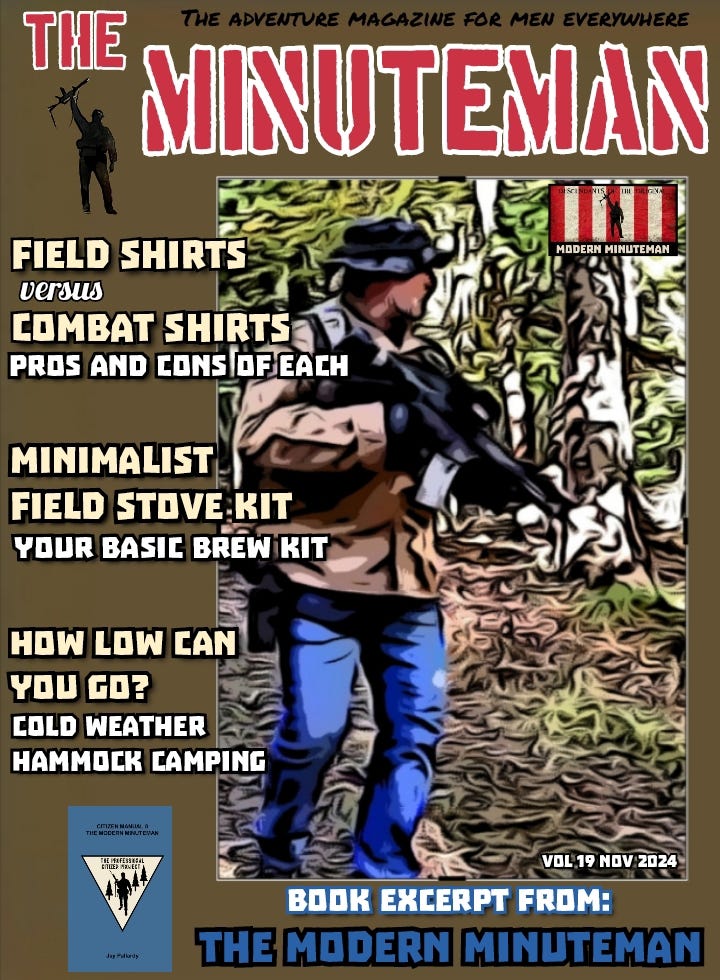
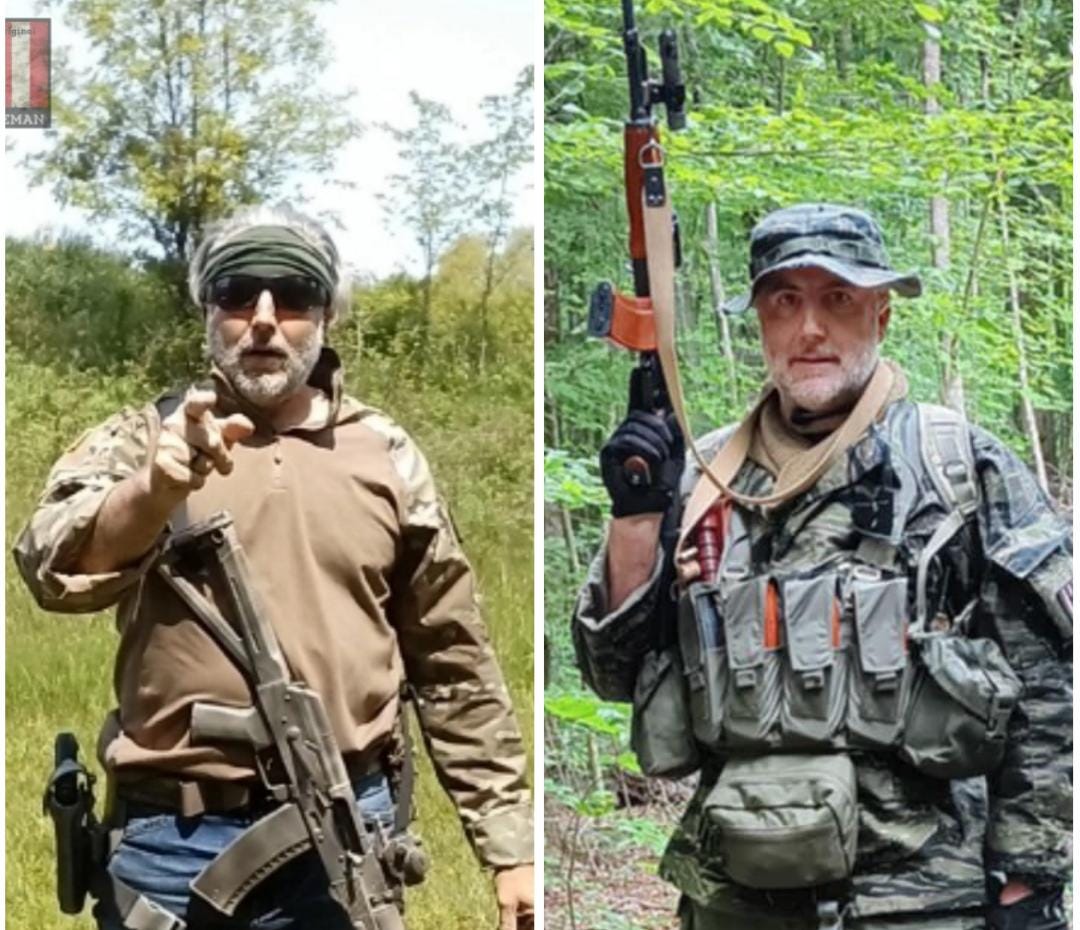
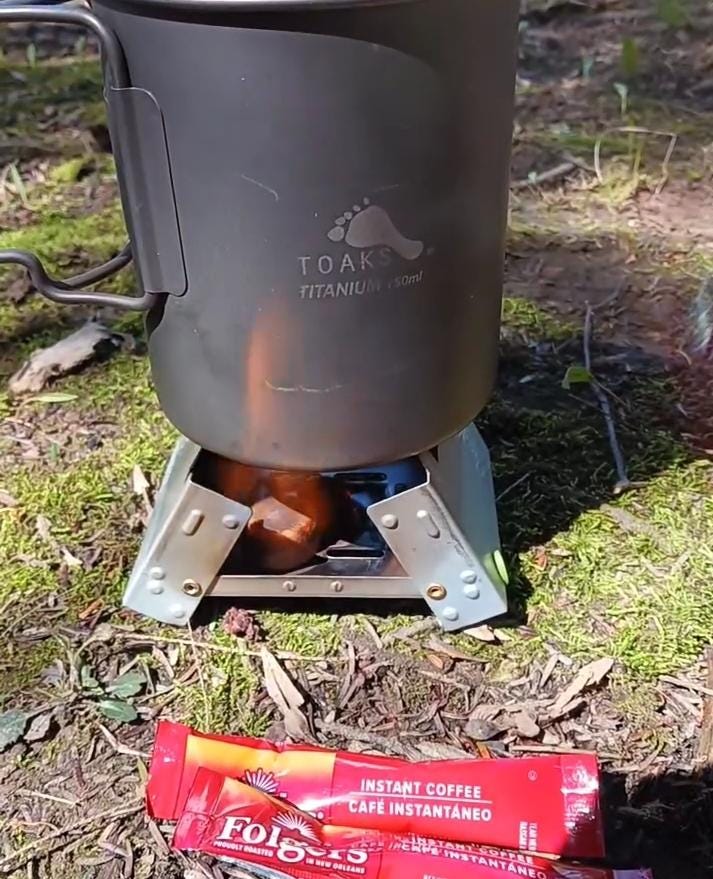
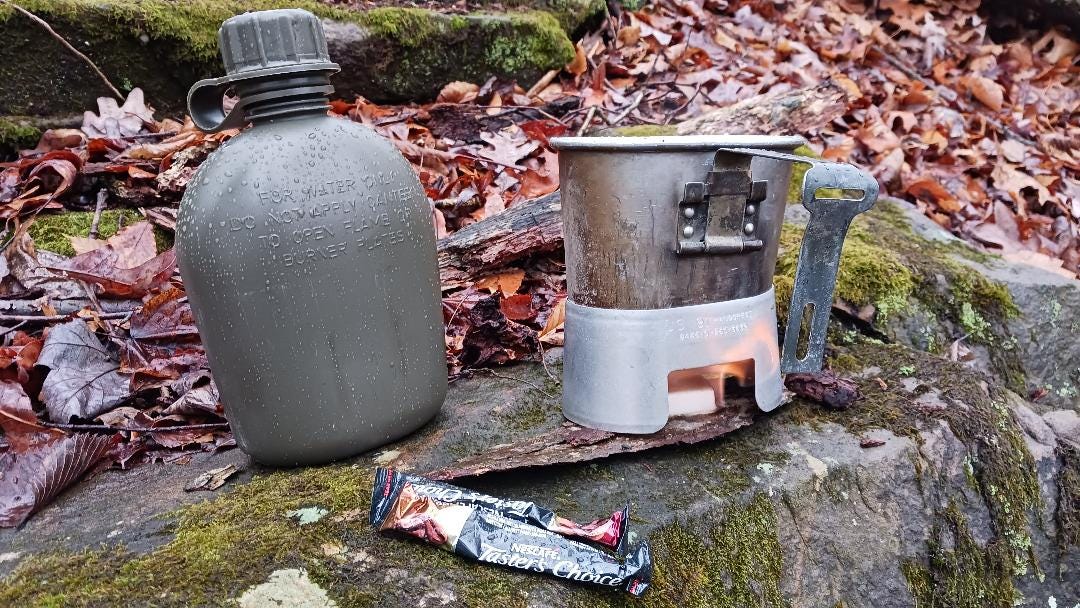

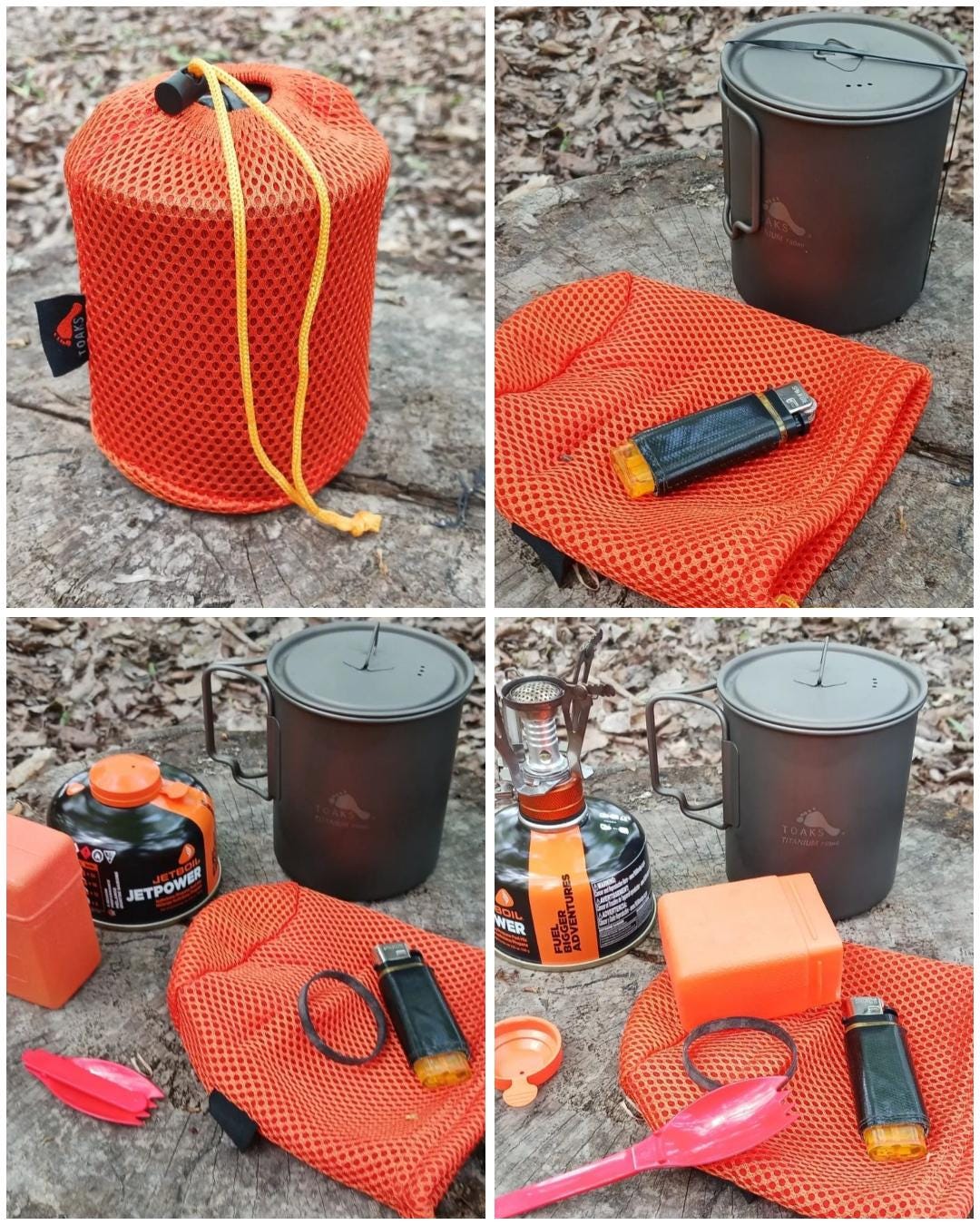


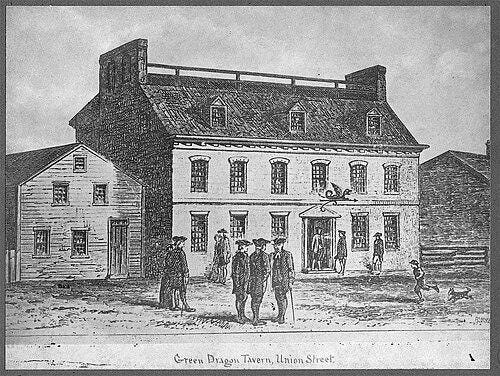
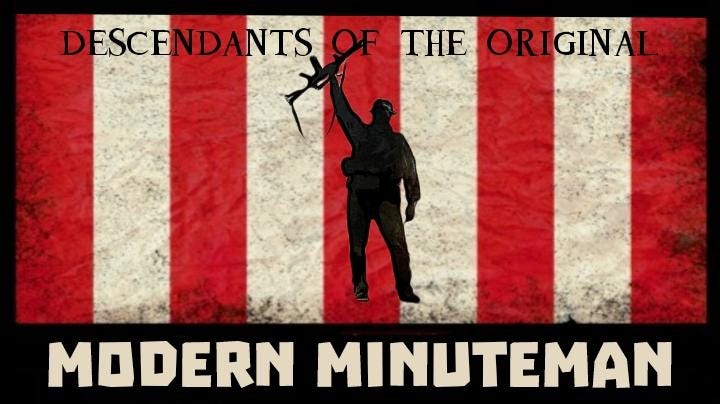
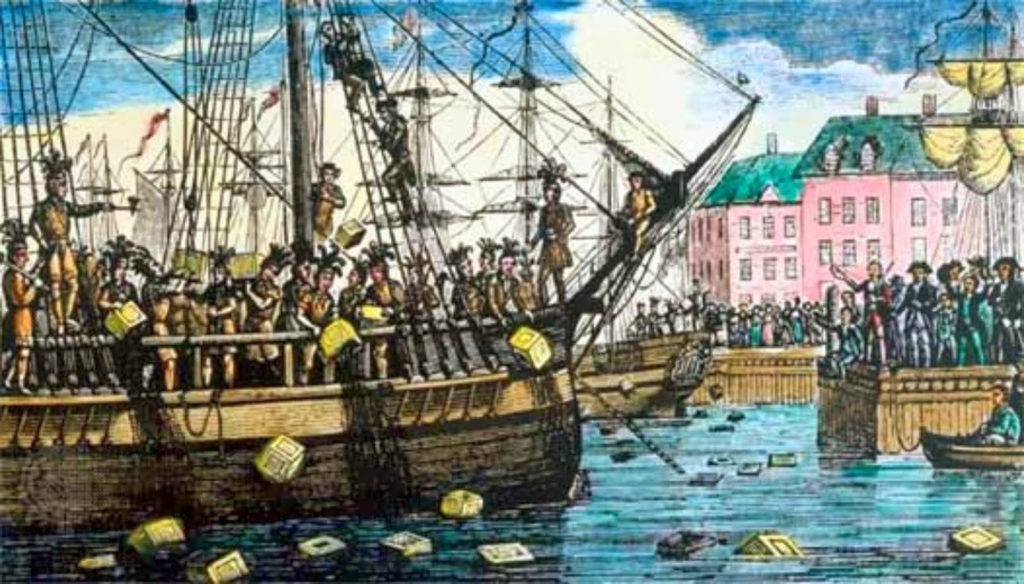
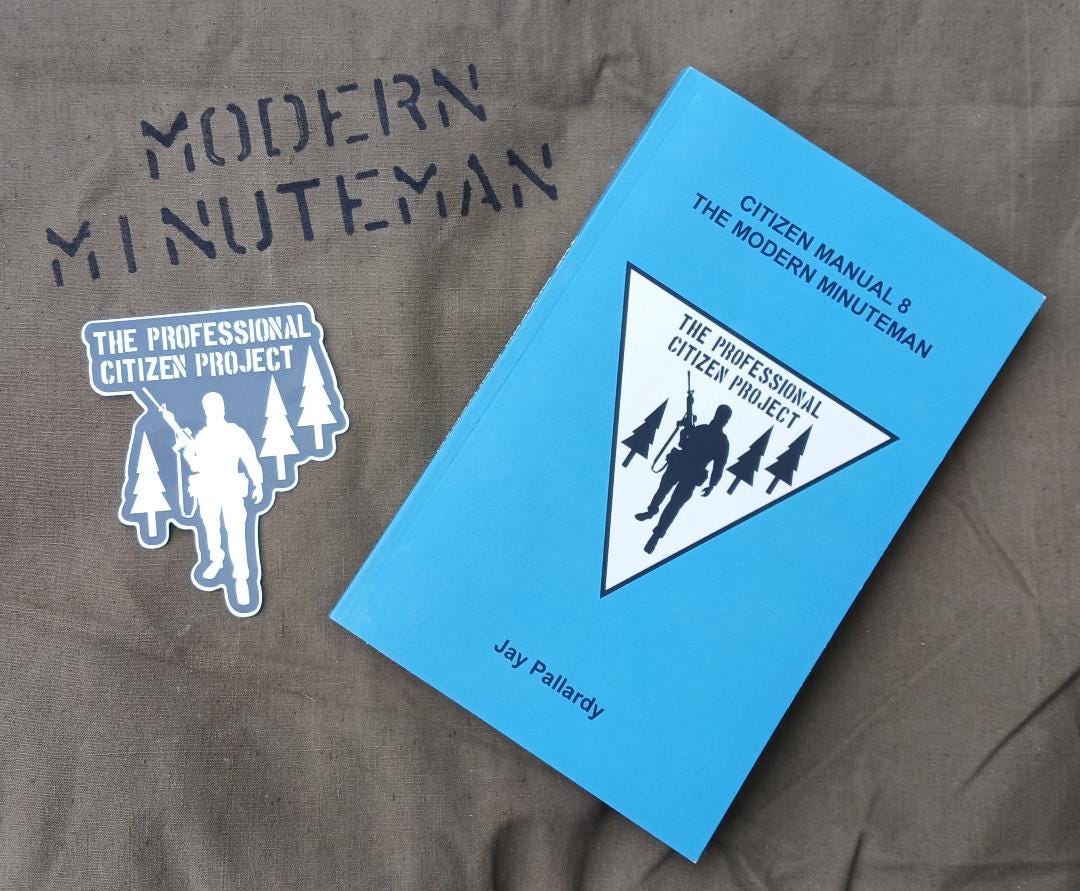
very intresting artical about the History
of the Sons of liberty, and camp stoves,
Also the camo shirts. great NoV. Issue.
Thanks DAVE-Fisherman.-U.S.A.
Got the new book Jay. Going to start it as soon as I finish the Land Nav book, (CM5) which I highly recommend as well.